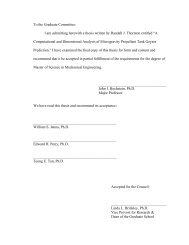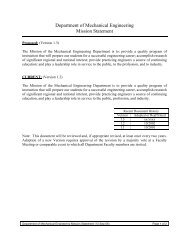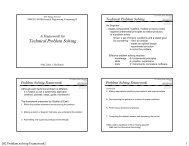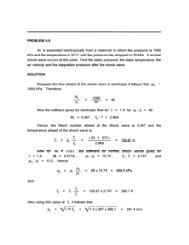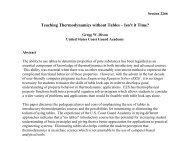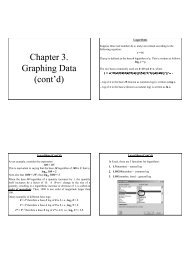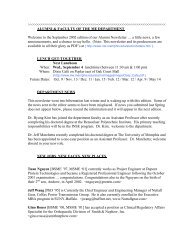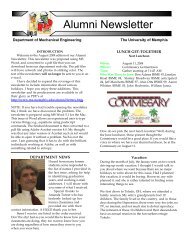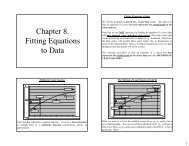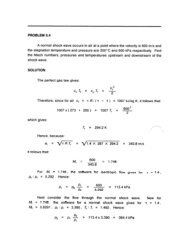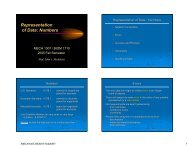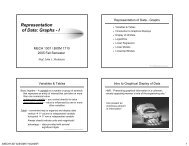MECHANICS of FLUIDS LABORATORY - Mechanical Engineering
MECHANICS of FLUIDS LABORATORY - Mechanical Engineering
MECHANICS of FLUIDS LABORATORY - Mechanical Engineering
You also want an ePaper? Increase the reach of your titles
YUMPU automatically turns print PDFs into web optimized ePapers that Google loves.
Pressure Measurement<br />
Equipment<br />
A Wind Tunnel<br />
A Right Circular Cylinder with Pressure<br />
Taps<br />
Figure 9.3 is a schematic <strong>of</strong> a wind tunnel. It<br />
consists <strong>of</strong> a nozzle, a test section, a diffuser and a<br />
fan. Flow enters the nozzle and passes through<br />
flow straighteners and screens. The flow is<br />
directed through a test section whose walls are<br />
made <strong>of</strong> a transparent material, usually<br />
Plexiglas or glass. An object is placed in the test<br />
section for observation. Downstream <strong>of</strong> the test<br />
section is the diffuser followed by the fan. In the<br />
tunnel that is used in this experiment, the test<br />
section is rectangular and the fan housing is<br />
circular. Thus one function <strong>of</strong> the diffuser is to<br />
gradually lead the flow from a rectangular<br />
section to a circular one.<br />
Figure 9.4 is a schematic <strong>of</strong> the side view <strong>of</strong><br />
the circular cylinder. The cylinder is placed in<br />
the test section <strong>of</strong> the wind tunnel which is<br />
operated at a preselected velocity. The pressure<br />
tap labeled as #1 is placed at 0° directly facing<br />
the approach flow. The pressure taps are<br />
attached to a manometer board. Only the first 18<br />
taps are connected because the expected pr<strong>of</strong>ile is<br />
symmetric about the 0° line. The manometers will<br />
provide readings <strong>of</strong> pressure at 10° intervals<br />
about half the cylinder. For two different<br />
approach velocities, measure and record the<br />
pressure distribution about the circular cylinder.<br />
Plot the pressure distribution on polar coordinate<br />
graph paper for both cases. Also graph pressure<br />
difference (pressure at the point <strong>of</strong> interest minus<br />
the free stream pressure) as a function <strong>of</strong> angle θ<br />
on linear graph paper. Next, graph ∆p cosθ vs θ<br />
(horizontal axis) on linear paper and determine<br />
the area under the curve by any convenient<br />
method (counting squares or a numerical<br />
technique).<br />
The drag force can be calculated by<br />
integrating the flow-direction-component <strong>of</strong> each<br />
pressure over the area <strong>of</strong> the cylinder:<br />
π<br />
D f<br />
= 2RL<br />
0<br />
∫ ∆p cosθdθ<br />
The above expression states that the drag force is<br />
twice the cylinder radius (2R) times the cylinder<br />
length (L) times the area under the curve <strong>of</strong> ∆p<br />
cosθ vs θ.<br />
Drag data are usually expressed as drag<br />
coefficient C D<br />
vs Reynolds number Re. The drag<br />
coefficient is defined as<br />
D f<br />
C D<br />
=<br />
ρV 2 A/2<br />
The Reynolds number is<br />
Re = ρVD<br />
µ<br />
inlet flow<br />
straighteners<br />
nozzle<br />
test section<br />
diffuser<br />
fan<br />
FIGURE 9.3. A schematic <strong>of</strong> the wind tunnel used in this experiment.<br />
25



